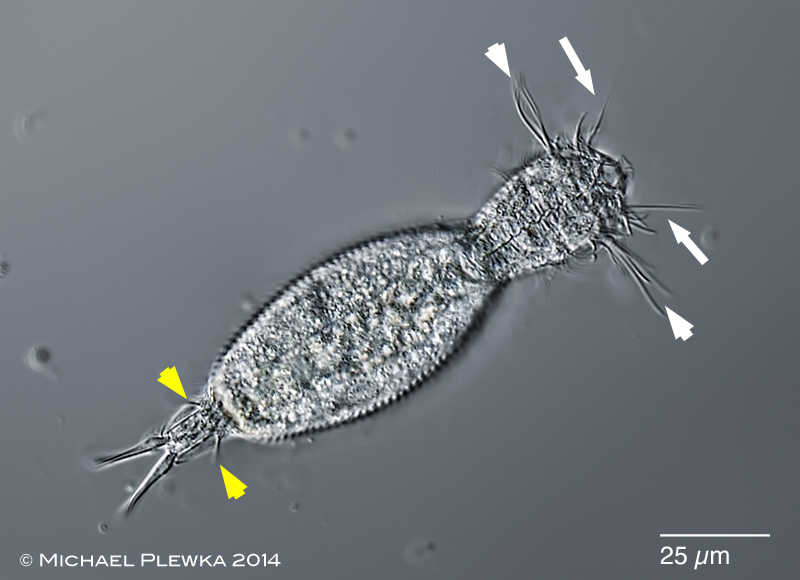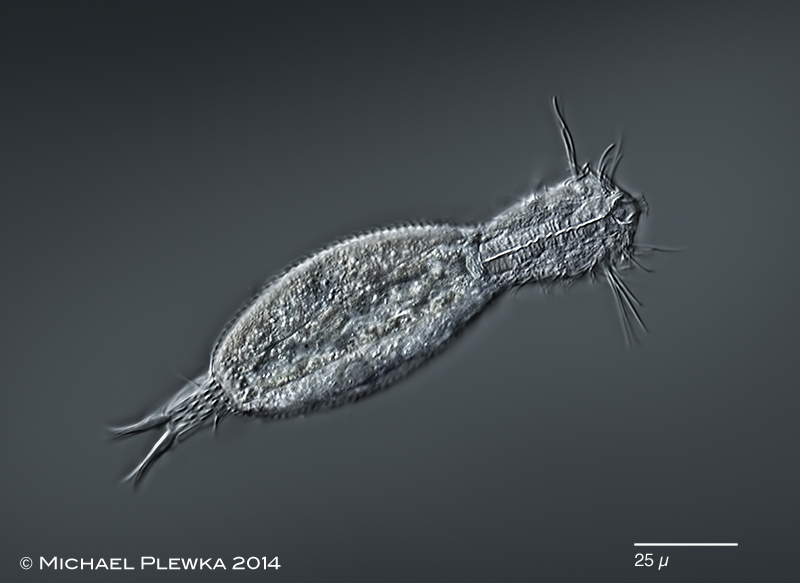| Dendroichthydium silvaticus, dorsoventral view. Around the mouth there is one pair of stiff setolae on each side (arrows); at the sides of the head there are another 2 pairs each (arrowheads). At the posterior part of the trunk another pair of setolae (yellow arrows). In contrast to the drawings in SCHWANK 1990 the posterior setolae are inserted at the base of the foot The adhesive tubules at the posterior end of the toes are unusually long (1) |
| |
| |
 |
| Dendroichthydium silvaticus, head with everted mouth tube (arrow). (1) |
| |
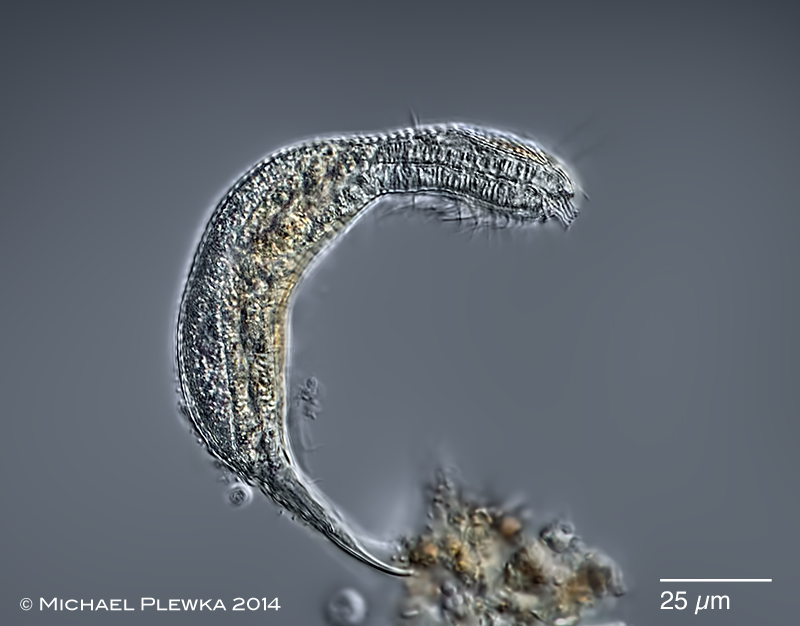 |
| Dendroichthydium silvaticus, lateral view. SCHWANK 1990 reports A. silvaticus to be found only in Poland and Hungary at that time. Maybe this is the first discovery in Germany. (1) |
| |
 |
| Dendroichthydium silvaticus, dorsal view. Focal plane on the scales of the head. (1) |
| |
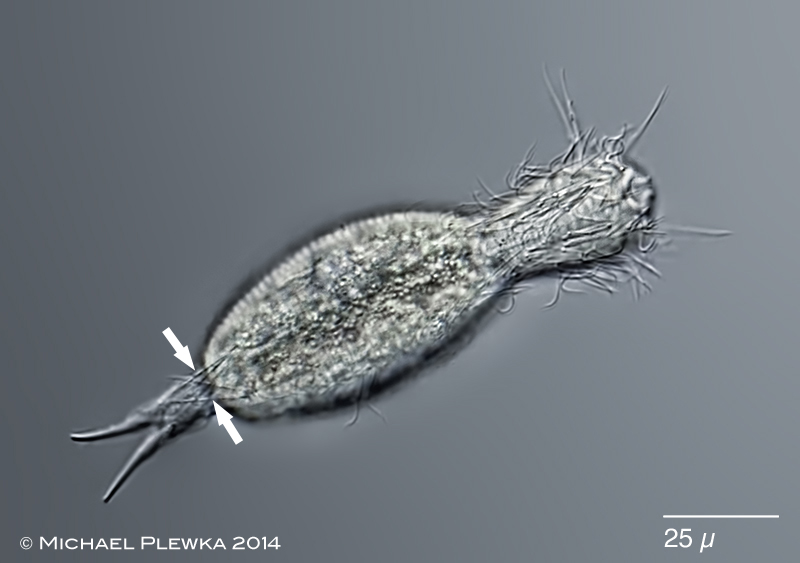 |
| Dendroichthydium silvaticus, focal plane on the ventral cilia of the head and the setae on the rump (arrows). (1) |
| |
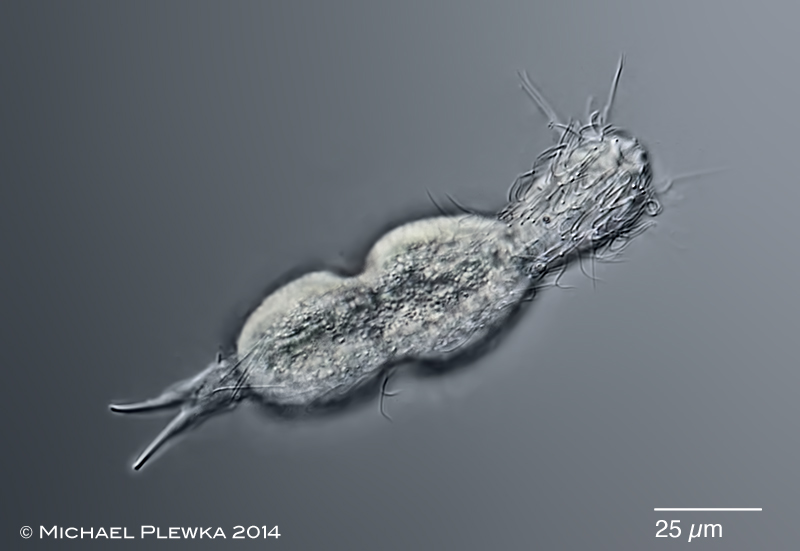 |
| A strange behavior could be observed at several specimens: from time to time D. silvaticus contracts in the middle of the body giving the impression of having two eggs. (1) |
| |
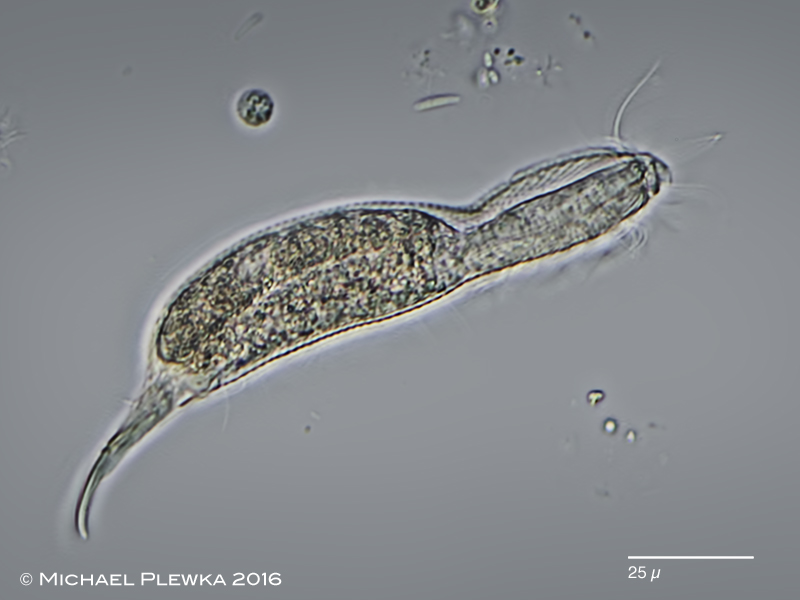 |
| Dendroichthydium silvaticus, another specimen; lateral view; from (2) |
| |
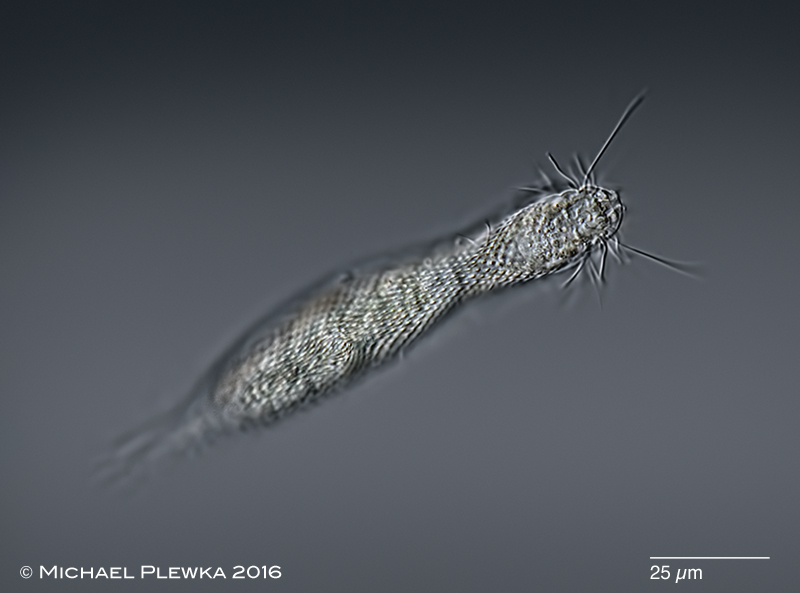 |
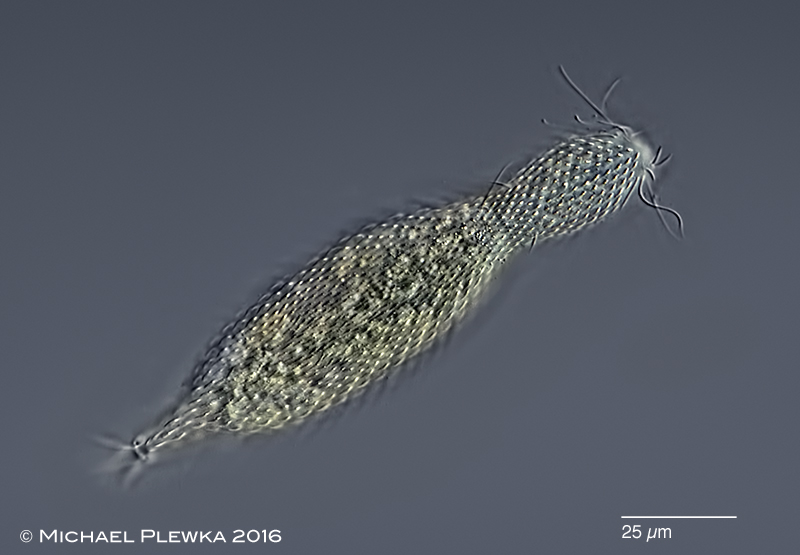 |
| Dendroichthydium silvaticus, two aspects (dorsoventrall view) of specimen from (2) |
| |
 |
| Dendroichthydium silvaticus, another specimen; ventral view; from (2) |
| |
| more on this new genus / species here |
| |
| |
| |
|
|
| |
| |
|
Location (2): Helvete, Norway |
 |
| |
| Habitat (2): Sphagnum-moss |
| |
| Date: coll.: 28.07.2016 (2); img.: 04.08.2016 (2) |
| |
|
|
|
|
|
| |
| |
| |
|
|
|
